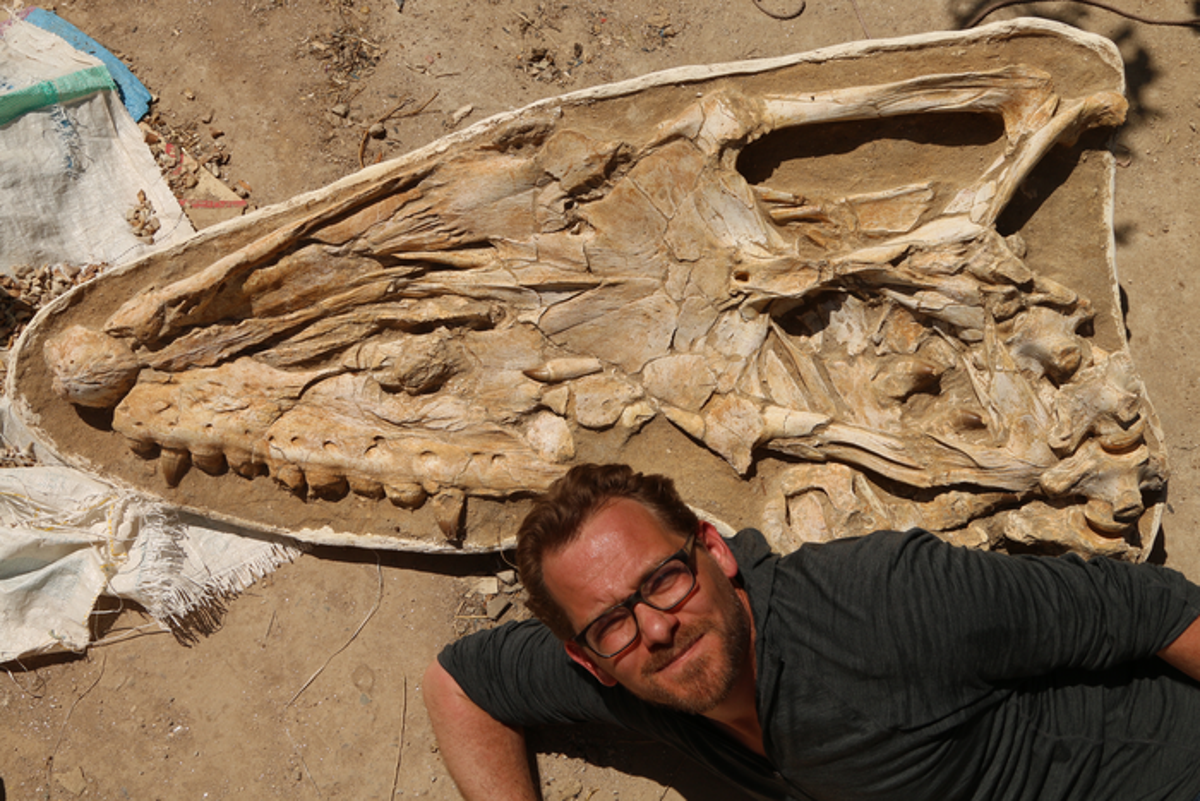
Scientists have unearthed a new species of the giant sea lizard mosasaur in Morocco that hunted other marine reptiles about 66 million years ago using its massive jaws and teeth like those of modern-day killer whales.
The giant marine lizard named Thalassotitan atrox, described on Wednesday in the journal Cretaceous Research, grew up to 9m (30 ft) in length and are distant relatives of modern iguanas and monitor lizards.
While some mosasaurs evolved to eat small prey like fish and squid, and others crushed ammonites and clams, scientists, including those from the University of Bath in the UK, say the newly discovered one evolved to prey on all the other marine reptiles.
The study suggests Thalassotitan was an apex predator of its time, sitting at the top of the food chain.
At the bottom of the food chain were plankton that fed on nutrient-rich water from the depths of the ocean. Small fish fed on these plankton, which were then preyed on by larger fish that fed mosasaurs and plesiosaurs.
These marine reptiles then became food for the giant, carnivorous Thalassotitan, researchers explain.
The giant marine reptile had an enormous skull measuring 1.4m (5ft) long, and grew to nearly 9m (30ft) long, about the size of a killer whale.
Scientists say the Thalassotitan had a short, wide muzzle and massive, conical teeth – similar to that of modern-day orca – which let the reptile seize and rip apart huge prey.
They found that the giant reptile’s teeth were often broken and worn, suggesting that Thalassotitan attacked other marine reptiles, chipping, breaking, and grinding its teeth as it bit into their bones and tore them apart.
Researchers also discovered the remains of Thalassotitan’s victims, including large predatory fish, a sea turtle, a half-meter-long plesiosaur head, and jaws and skulls of “at least three” different mosasaur species.
Scientists suspect these prey were likely digested in Thalassotitan’s stomach before it spat out their bones.
“We can’t say for certain which species of animal ate all these other mosasaurs. But we have the bones of marine reptiles killed and eaten by a large predator,” study co-author Nick Longrich from the University of Bath said.
Researchers also found evidence of injuries on Thalassotitan likely sustained in violent combat with other mosasaurs.
They say the new mosasaur lived in the final million years of the Age of Dinosaurs, and unlike these contemporaries didn’t die off following the extinction-driving asteroid impact, but flourished.
“Thalassotitan was an amazing, terrifying animal. Imagine a Komodo Dragon crossed with a great white shark crossed with a T rex crossed with a killer whale,” Dr Longrich added.
“Morocco has one of the richest and most diverse marine faunas known from the Cretaceous. We’re just getting started understanding the diversity and the biology of the mosasaurs,” Nour-Eddine Jalil, a co-author on the paper from the Museum of Natural History in Paris, said.







